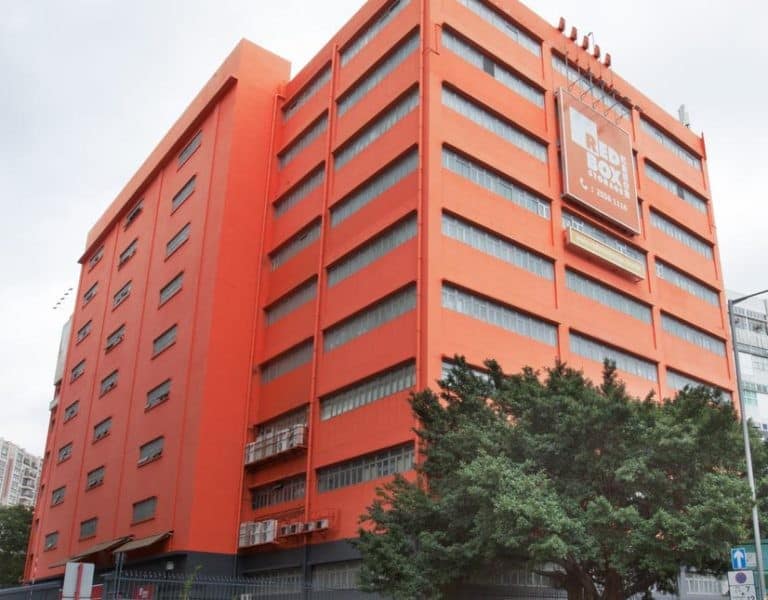
Stuart Jackson, CEO of InfraRed NF
Asia is rapidly catching up to the West in income per capita, consumer spending and a variety of other economic indicators, but the region still lags many western nations in one key metric of prosperity – space to store spare stuff, especially as measured by the size of Asia’s self-storage industry.
The US has some 54,000 self-storage facilities providing more than 2.6 billion square feet (242,000 square metres) of space to stash skis, sofas and last year’s Prada handbags, according to industry website Sparefoot. By comparison, Hong Kong, Japan, Mainland China, Malaysia, Singapore and Taiwan combined last year had only 3,023 facilities offering approximately 21.1 million square feet (1.96 million square metres), as measured by the Self-Storage Association of Asia.
Now Hong Kong-based real estate investment house Infra-Red NF is seeing if there is profit to be made in help Asia to catch up to the West in the shed race, and a pair of recent investments in self-storage providers in Hong Kong and mainland China by the joint venture between the UK’s InfraRed Capital Partners and Nan Fung Group’s Vervain Resources could give it space to grow its profits.
Looking for Macro Opportunities From Hong Kong’s Micro-Home Dwellers
Hong Kong’s median living space per capita is just 15 square metres, slightly larger than a standard parking space. The tiny city appears to be the perfect place to start a self-storage service. This tiny space is one of the primary reasons that InfraRed NF last month invested $50 million to acquire a 90 percent stake in Hong Kong self-storage provider RedBox Storage.
“There’s a huge opportunity in self-storage in Hong Kong that is driven by high residential prices,” said Stuart Jackson, CEO of InfraRed NF during an interview with Mingtiandi. As large spaces are unaffordable to many, small living space in the city prevails and contributes to the demand for third party storage services as well, he added.
Given Hong Kong’s tiny homes, some 90 percent of RedBox’s clients are individual users, and the company’s facilities are now 90 percent occupied, according to InfraRed. That robust leasing rate comes in part from a healthier storage industry, with Hong Kong offering an average of 60.27 self-storage per million population in 2016, according to the industry association.
Doing Self-Storage on the Mainland
Infra-Red NF’s new Hong Kong business comes after the private equity fund manager invested $28 million last May to acquire mainland-based China Mini Storage, and the company is finding that while the storage space itself may be similar on both sides of the border, in the mainland, Infra-Red faces a different set of issues and priorities for its self-storage business.
While high residential prices and small living space are the main drivers for self-storage demand in Hong Kong, those problems are not as acute in mainland China, according to Jackson. The firm therefore chooses to operate in densely populated areas with high property prices like the area within the fifth ring road in Beijing and within the core districts of Shanghai.
“In China we are talking about CBD locations in Shanghai and Beijing, where some of those (density) factors are still relevant because of the rapid increase in property prices in mainland China, even they are not as severe. The living space is not as small as Hong Kong,” said Jackson.
Unlike more crowded Hong Kong, where self-storage facilities reached 82 percent occupancy in 2016, according to a report last year by The Self Storage Association Asia Annual Report, mini-sheds in mainland China averaged just 62 percent occupancy over the same period. As of 2016, residential space per capita in China was 40.8 square metres (439 square feet) with an urban figure of 36.6 square metres, National Bureau of Statistics data shows.
Leveraging Technology to Promote Awareness

A RedBox facility in Hong Kong
After entering the mainland market for a year, InfraRed found that the awareness of self-storage as a concept is still low in China, said Jackson. But he believes the large size of population and the addressable market poses growth potential in the market. China Mini Storage has 28 centres in Beijing, Shanghai, Shenzhen and Guangzhou, as well as 20 lockers for intraday renting in Beijing. The company’s facilities in Beijing’s Sanlitun area and at Donghai Plaza in Shanghai’s Jing’an district have achieved almost full occupancy, said InfraRed.
The firm has built a technology-based platform in the mainland to lure millennials — their target customers. By installing the communication app Wechat developed by Tencent, customers could access the facilities simply with their phone.
Customers can book the facility on the Wechat platform, which shows the availability in real time. Once the booking is confirmed, users can take adigital key to the site and enter the facility by themselves.
The mainland tech innovations have proved successful enough that InfraRed now plans to import some of the online elements of China Mini Storage for use in its Hong Kong business. RedBox will roll out an online booking facility on their website in June to make the storing process more convenient. The company also has technology like automated access with QR code in the pipeline.
Leveraging Basements to Boost Returns
In addition to leveraging technology, China Mini Storage relies on a strategy of picking underutilised basement space with small size averaging 1,000 square metres, which manages to secure a yield of 10 percent, according to Jackson.
China Mini Storage now has an overall occupancy rate of around 75 percent, according to Infra-Red, well above the industry average of 62 percent recorded in 2016. At present, two-thirds of the company’s customers are individuals while the remaining are businesses in mainland China.
Leave a Reply